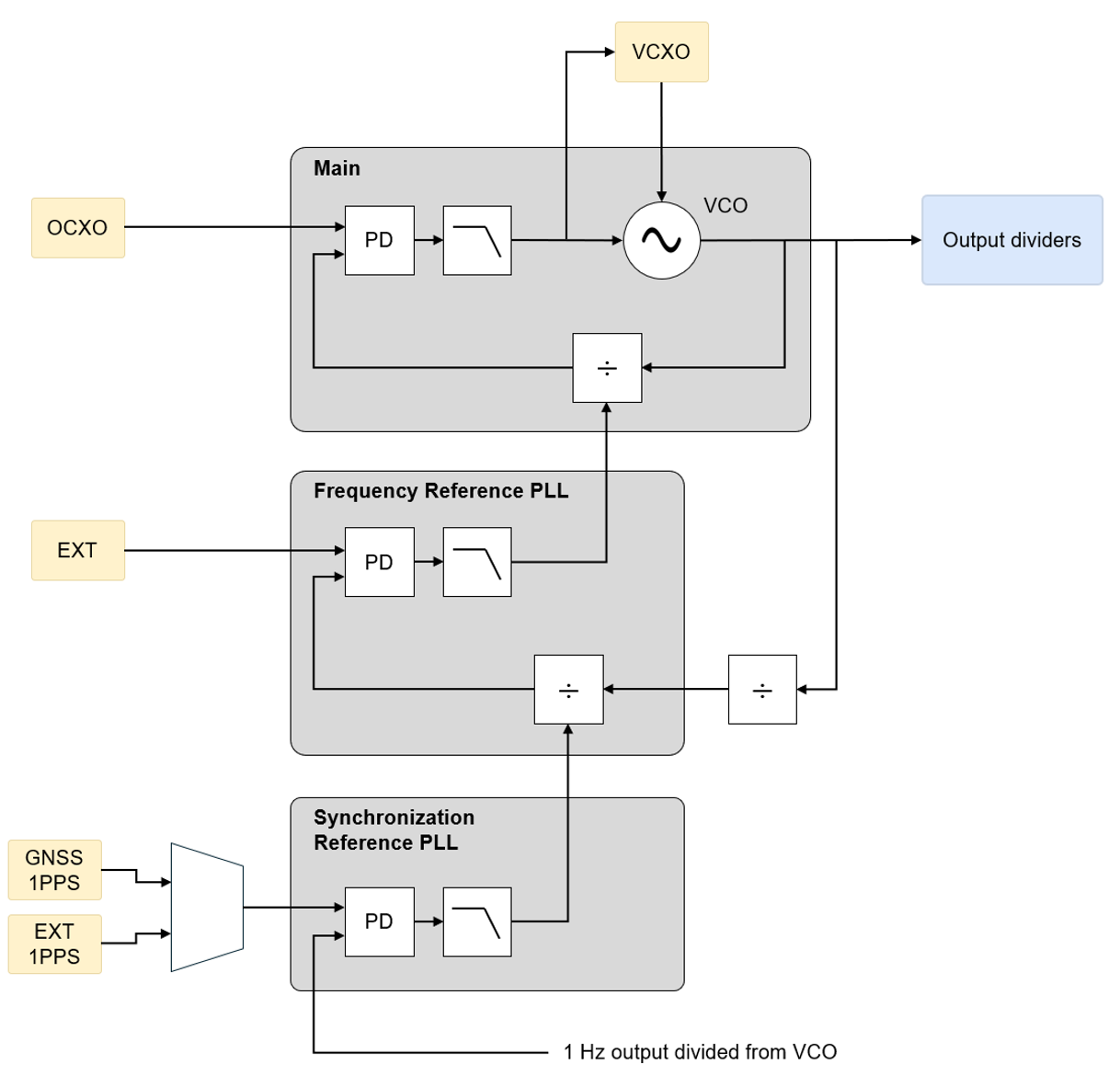This white paper provides an overview of a multi-frequency lock-in amplifier utilizing Moku:Pro’s Multi-Instrument Mode.
Moku:Pro is an Instrument-on-Chip (IoC) test system able to run multiple instruments on a single FPGA-based hardware platform. Now with Multi-Instrument Mode, entire systems of test equipment traditionally made up of separate hardware boxes or modules can be realized on a single Moku:Pro. Utilizing dynamic reconfiguration of the FPGA, users can hot-swap instruments independently, without affecting the remaining instruments in the system. Furthermore, instruments can be interconnected, and signals pass between them entirely in the digital domain without ever leaving the FPGA. This enables high data rates with ultra-low latency with no degradation of SNR that typically would result from the analog-to-digital or digital-to-analog conversions in separate hardware modules or boxes.
Multi-Instrument Mode expands the versatility of existing Moku:Pro instruments, including the Lock-in Amplifier which can now be configured to provide multi-frequency and multi-harmonic demodulation capabilities.
Multi-Instrument Mode Architecture

Figure 1: Multi-Instrument Mode user interface on Moku:Pro – all 4 slots empty
Figure 1 shows the starting point of building a multi-instrument system. Moku:Pro’s FPGA is divided into 4 instrument “slots”. Each slot represents a segment within the UltraScale+ FPGA and has access to Moku:Pro’s analog inputs and outputs. Signals can be passed between these instruments in the digital domain and without ever leaving the FPGA and are therefore lossless with deterministic, nanosecond-level latency. All 4 slots can be phase synchronized with one tap of the “Sync” button. Users have the flexibility to place Moku:Pro’s individual instruments into these slots, for example the Spectrum Analyzer, Oscilloscope, and PID Controller can be deployed simultaneously.
Multiple oscillators, multiple harmonics: Using the Lock-in Amplifier in Multi-Instrument Mode
Lock-in Amplifiers extract the amplitude and phase of a single frequency component from a noisy background by mixing the input signal with a known stable local oscillator prior to filtering. In some applications, users require the amplitude and phase information at multiple frequencies simultaneously, either from harmonics of a single oscillator or multiple oscillators of arbitrary frequency. This often requires additional hardware, signal splitters, or multiple lock-in amplifiers.
With Multi-Instrument Mode, users now have the flexibility of placing up to four Lock-in Amplifiers in the instrument slots. This removes the need for multiple hardware units and simplifies complex lab setups, reducing costs and configuration time. Each Lock-in Amplifier can be configured independently with its own local oscillator, enabling the user to demodulate 4 signals of arbitrary frequency including, for example, a fundamental and 3 harmonics, etc. Moku:Pro can demodulate 4 signals up to 600 MHz with 120dB of dynamic range and superior blended ADC noise figures.
Each Lock-in Amplifier can also be connected to Moku:Pro’s other instruments, enabling pre or post-signal conditioning, data visualization, and data logging.
Figure 2 shows a Multi-Instrument Mode configuration with three Lock-in Amplifiers and an Oscilloscope.

Figure 2: A 3 Lock-in Amplifier configuration with 1 Oscilloscope
The ADC on input 1 is configured to feed into slots 1, 2, and 3 for demodulation. The local oscillators in each Lock-in slot are set to the fundamental or specific harmonic of the modulation frequency. These local oscillators are then synchronized in phase with the “Sync” button, an important feature in multi-Lock-in Amplifier applications. The demodulated signals are then sent to the analog outputs via DACs 1, 2, and 3. At the same time, the oscilloscope in slot 4 is configured to observe the signals from Lock-in 1 and Lock-in 2. The signal routing is highly flexible; all slots can access all inputs and outputs and share high speed digital signals to adjacent slots or to the signal busses for sending signals to non-adjacent slots. Utilizing dynamic reconfiguration in the FPGA, the Lock-ins in slots 1, 2, and 3 can be left operating while the Oscilloscope is seamlessly swapped with the Spectrum Analyzer. This allows the frequency components to be observed without disturbing the Lock-in Amplifiers.
PID controllers, filters, signal generators, etc. can be implemented alongside the Lock-ins to perform verification, analysis, and further signal processing in tandem.
Conclusion
Moku:Pro’s digital Lock-in Amplifier supports dual-phase demodulation (XY/Rθ) from DC to 600 MHz with more than 120 dB dynamic reserve. Blended ADC technology ensures consistent low noise across the entire spectrum, from acoustic to RF. Multi-Instrument Mode provides the flexibility to extend these capabilities in a way that is fully customizable, such as adding multiple harmonic or frequency demodulation capabilities. These advantages combined make Moku:Pro a uniquely powerful and flexible tool for designing closed-loop control systems an implementing sophisticated test and measurement scenarios.
Learn more about Multi-Instrument Mode.
Contact our team to discuss your application.
Have questions or want a printable version?
Please contact us at support@liquidinstruments.com






